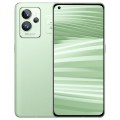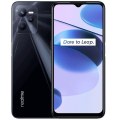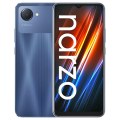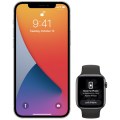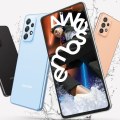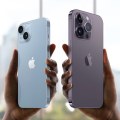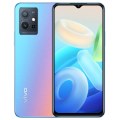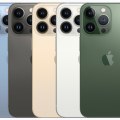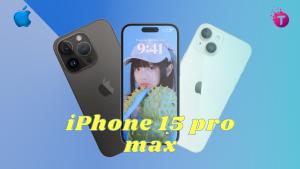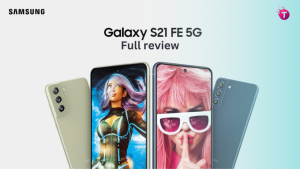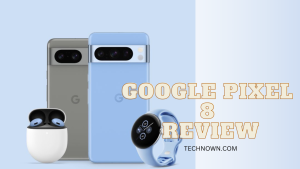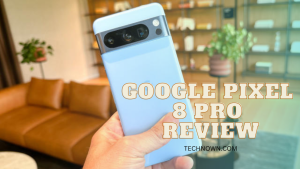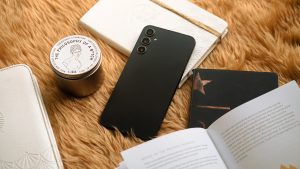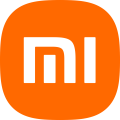Realme GT Neo 3 150W
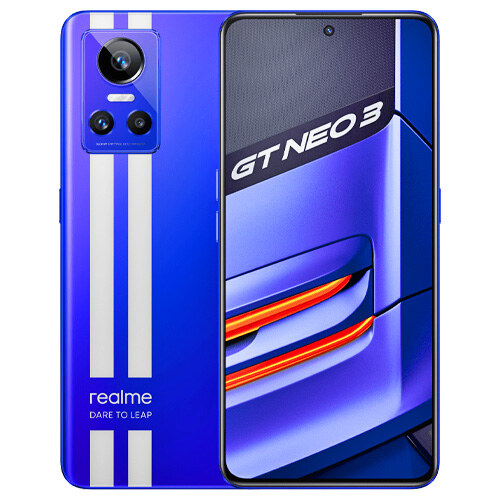


-
CPU: Octa-core (4x2.85 GHz Cortex-A78 & 4x2.0 GHz Cortex-A55)
-
RAM: 6GB/8GB/12GB
-
Storage: 128GB/256GB
-
Display: 6.7 inches, 108.0 cm2
-
Camera: 50 MP, f/1.9, 24mm (wide), 1/1.56", 1.0µm, PDAF, OIS
-
OS: Android 12
Introducing the Realme GT Neo 3 5G: Specs, Features, and Price in Bangladesh
The Realme GT Neo 3, also known as Realme GT Neo3 150W. is a remarkable smartphone launched by the company on 30th March. 2022, following its announcement on 22nd March 2022. This powerful device offers an exceptional user experience with. Its advanced features and cutting-edge technology.
Display:
Featuring a stunning 6.7-inch AMOLED capacitive touchscreen. The Realme GT Neo 3 displays vibrant visuals with support for 1 billion colors. Its punch-hole design ensures an immersive viewing experience. While the 1080 x 2412 pixel resolution and 394 PPI (pixels per inch) deliver crisp and detailed imagery.
Body and Sensors:
Crafted with a sleek glass body, this mobile device boasts dimensions of 163.3mm in height. 75.6mm in width, and a mere 8.2mm in thickness. Weighing just 188g, it offers a lightweight and comfortable grip. The Realme GT Neo 3 150W is available in stylish Black, Blue, and Silver color options. It also incorporates an under-display optical fingerprint sensor for fast and accurate unlocking. Additionally, it includes essential sensors such as an accelerometer. Gyro, proximity sensor, and compass for enhanced functionality. Face unlock is also supported for added convenience and security.
Network:
The Realme GT Neo 3 150W supports 3G, 4G. And 5G networks, ensuring fast and reliable connectivity. It also offers GPRS and EDGE capabilities. With HSPA speeds of 42.2/5.76 Mbps, LTE-A, and 5G, you can enjoy seamless browsing, streaming, and online gaming experiences.
Performance:
Powered by the Android 12 operating system, the Realme GT Neo 3 utilizes the MediaTek Dimensity 8100 (5 nm) chipset and an octa-core processor consisting of 4×2.85 GHz Cortex-A78 and 4×2.0 GHz Cortex-A55 cores. This combination delivers exceptional performance, enabling smooth multitasking and seamless app navigation.
RAM and ROM:
Realme offers the GT Neo 3 150W in four variants: 6GB/128GB, 8GB/128GB, 8GB/256GB, and 12GB/256GB. The generous RAM capacity ensures optimal gaming and graphics performance, allowing for effortless gameplay of FHD-quality graphics-intensive games.
Camera:
Capture stunning photos and videos with the Realme GT Neo 3 ‘s impressive camera setup. The rear camera features a 50MP primary lens, an 8MP ultra-wide lens, and a 2MP depth sensor, enabling you to record high-quality 4K@30/60fps videos. On the front, a 16MP selfie camera lets you capture beautiful self-portraits and record 1080p@30fps videos. The phone’s camera ensures effortless high-quality selfie photography.
Battery:
Equipped with a non-removable Li-Po 4500 mAh battery, the Realme GT Neo 3 150W offers excellent battery life. Enjoy up to 80 hours of standby time and 12 hours of uninterrupted net browsing. On a full charge, you can enjoy up to 33 hours of 3G talk time. Thanks to its 150W fast charging capability, the phone can reach a full charge in approximately 10 minutes.
Realme GT Neo 3 150W 5G Price in Bangladesh:
The expected price of the Realme GT Neo 3 5G in Bangladesh is 30,000 Taka. Considering its features and specifications, we anticipate that this smartphone will be an excellent choice for users in Bangladesh.
Specs
General
| Device Type | Smartphone |
| Model | GT Neo 3 150W |
| Announced | 22 March, 2022 |
| Released | 30 March, 2022 |
| Status | Available |
| Price | 30000 |
Design
| Type <strong>Design Type</strong> called form factor refers to a mobile phone's size, shape, and style as well as the layout and position of major components of phone. There are three major form factors seen in mobile phones => bar phones, folding phones and sliding phones. | Bar |
| Dimensions | 163.3 x 75.6 x 8.2 mm (6.43 x 2.98 x 0.32 in) |
| Weight | 188 g (6.63 oz) |
| Protection |
Front Glass |
| Colors |
Black, Blue & Silver |
Network
| 2G Network |
GSM 850 / 900 / 1800 / 1900 - SIM 1 & SIM 2 CDMA 800 |
| 3G Network |
HSDPA 850 / 900 / 1700(AWS) / 1900 / 2100 CDMA2000 1xEV-DO |
| 4G Network |
1, 2, 3, 4, 5, 7, 8, 18, 19, 26, 28, 34, 38, 39, 40, 41 |
| 5G Network |
1, 3, 5, 8, 28, 40, 41, 77, 78 SA/NSA |
| SIM <strong>SIM</strong> (Subscriber Identity Module) is a small card that contains mobile network subscriber's account information. This allows the phone using the card to attach to a mobile network. The SIM card is most commonly associated with GSM and UMTS mobile networks. Moving a SIM card from one phone to another allows a subscriber to switch mobile phones without having to contact their mobile network carrier. SIM cards can also be used by a phone to store limited amounts of data, such as phone numbers and text messages. | Nano SIM |
| Dual SIM | Yes |
Display
| Display Type <strong>Display Technology => </strong> A number of display technologies and types used in mobile phones => TFT (Thin Film Transistor), IPS (In-Place Switching), OLED (Organic Light Emitting Diode), AMOLED (Active-Matrix Organic Light-Emitting Diode), Super AMOLED (an even advanced version of AMOLED), Resistive Touchscreen (Resistive touchscreens contain two layer of conductive material with a very small gap between them which acts as a resistance), Capacitive Touchsceen (Capacitive touchscreen technology consists of a layer of glass coated with a transparent conductor) | AMOLED capacitive touchscreen, 1B colors |
| Size | 6.7 inches, 108.0 cm2 |
| Resolution | 1080 x 2412 pixels |
| Pixel Density <strong>Pixel Density (PPI)</strong> is refers to the concentration of pixels on a particular display, measured in pixels per inch (ppi). Pixel density is calculated by dividing the diagonal pixel resolution of a display by its diagonal size, higher pixel density better display quality. | 394 ppi density |
| Touch Screen | Yes |
| Display Protection <strong>Display Protection => </strong> Gorilla Glass is a special alkali-aluminosilicate glass shield with exceptional damage resistance that helps protect mobile displays from scratches, drops, and bumps of everyday use, It is always better to go for a smartphone with Gorilla Glass for that added protection and peace of mind. | Corning Gorilla Glass 5 |
| Features |
- HDR10+ - 120Hz refresh rate |
Media
| Alert Types | Vibration, MP3, WAV ringtones |
| Loudspeaker | Yes |
Camera
| Primary <strong>Camera</strong> is able to capture photographs and usually videos, The most important characteristics of a camera are the resolution (measured in megapixels), lens focus type (fixed or automatic), higher megapixel cameras are known to capture higher quality photos, but not always a good measurement of the photos quality. | 50 MP, f/1.9, 24mm (wide), 1/1.56", 1.0µm, PDAF, OIS 8 MP, f/2.3, 15mm, 120˚ (ultrawide), 1/4.0", 1.12µm 2 MP, f/2.4, (macro) |
| Image | 8150 x 6150 Pixels |
| Video | 4K@30/60fps, 1080p@30/60fps, gyro-EIS |
| Camera Features |
Dual-LED dual-tone Flash, Exposure compensation, ISO control, Phase Detection autofocus, Continuos Shooting, High Dynamic Range mode (HDR), 10X Digital Zoom, Auto Flash, Face detection, Touch to focus, Super night scene, Night scene filter, Panorama, Professional, Time-lapse photography, Bokeh, Super wide-angle, Super macro, AI scene recognition, AI beauty, Filter, Super glow, Super Text, and Portrait distortion correction |
| Flash <strong>Flash Light => </strong> There is commonly two types of flash lights are used in camera mobile phones, LED Flash (LED flash offers lower power consumption with drive circuitry that takes up very little room, LEDs can be strobed faster than any other light source), Xenon Flash (xenon flash produces an extremely intense full-spectrum white light for a very short duration) | Yes |
| Secondary | 16 MP, f/2.5, 26mm (wide), 1/3.09", 1.0µm |
Software
| Operating System <strong>OS => </strong> Every computer system run on a base software called Operating System (OS). Operating System controls all basic operations of the computer (such as smartphone, PDAs, tablet computers and other handheld devices). The Operating System allows the user to install and run third party applications (apps), apps are used to add new functionality to the device. | Android 12 |
| User Interface <strong>UI</strong> or user interface of a device is the look and feel of the on-screen menu system. How it works, its color scheme, how it responds to button presses, all of these things are part of the user interface. | Realme UI 3.0 |
| Facebook <strong>Facebook</strong> is a popular free social networking website that allows registered users to create profiles, upload photos and video, send messages and keep in touch with friends, family and colleagues. The site is available in 37 different languages. | |
| Youtube <strong>Youtube</strong> is a popular free video-sharing website, Youtube is the largest video sharing site in the world, Millions of users around the world have created accounts on the site that allow them to upload videos that anyone can watch. |
Hardware
| Chipset <strong>Chipset</strong> is a group of integrated circuits designed to perform one or a more dedicated functions, often with real time computing constraints, Popular smartphones are equipped with more advanced embedded chipsets that can do many different tasks depending on their programming. | MediaTek Dimensity 8100 (5 nm) |
| CPU <strong>CPU</strong> (Central Processing Unit) mostly known as processors, CPU processes instructions in order to carry out certain functions that make your device operate properly. Processors are often described as the brain of computers, smartphones and tablets, Smartphones and tablets rely on processors to carry out their every task, Processors are an incredibly important factor in selecting any type of computing device, including your smartphone. | Octa-core (4x2.85 GHz Cortex-A78 & 4x2.0 GHz Cortex-A55) |
| GPU <strong>GPU</strong> (Graphics Processing Unit) is a single-chip processor designed to rapidly manipulate and alter memory to accelerate the creation of images in a frame buffer intended for output to a display, This includes things such as lighting effects, object transformations, and 3D motion. | Mali-G610 MC6 - 64 bit |
| RAM (Memory) <strong>RAM</strong> (Random Access Memory) is a type of computer memory that can be accessed randomly, any byte of memory can be accessed without touching the preceding bytes that allows information to be stored and accessed quickly from random locations. RAM is the most common type of memory found in computer systems, smartphones, tablets and other electronic devices. | 12 GB |
| Internal Storage <strong>Internal Storage</strong> is a data storage space (flash memory) mostly used in smartphones, tablets and other electronic devices where operating system, apps, music, photos, videos, files and other user data Is stored. | 128GB/256GB |
| Card Slot <strong>Memory Card Slot</strong> is a special slot for inserting a memory card. Memory cards allow you to expand the phone's built-in memory, A memory card (sometimes called a flash memory card or a storage card) is a small storage medium used to store data such as text, pictures, audio, and video, for use on small, portable or remote computing devices such as mobile phones, mp3 players, digital cameras. | No |
| Sensors <strong>Sensors</strong> are electronic components that detects and responds to some type of input from the physical environment. The specific input could be light, heat, motion, moisture, pressure and location, The output is generally a signal that is converted to use in computing systems, a location sensor, such as a GPS receiver is able to detect current location of your electronic device. |
Fingerprint (under display, optical), accelerometer, gyro, proximity, compass |
Connectivity
| Bluetooth <strong>Bluetooth</strong> is a wireless communications technology for exchanging data between mobile phones, headsets, computers and other network devices over short distances without wires, Bluetooth technology was primarily designed to support simple wireless networking of personal consumer devices. | 5.1, A2DP, LE, aptX HD |
| Infrared <strong>Infrared</strong> connectivity is an old wireless technology used to connect two electronic devices. It uses a beam of infrared light to transmit information and so requires direct line of sight and operates only at close range. | |
| Wi-fi <strong>Wi-Fi</strong> is a popular wireless networking technology using radio waves to provide high-speed network connections that allows devices to communicate without cords or cables, Wi-Fi is increasingly becoming the preferred mode of internet connectivity all over the world. | Wi-Fi 802.11 a/b/g/n/ac/6 |
| Wi-fi Hotspot | |
| USB | USB Type-C 2.0 |
| GPS <strong>GPS</strong> The Global Positioning System is a satellite-based radio navigation system, GPS permits users to determine their position, velocity and the time 24 hours a day, in all weather, anywhere in the world, In order to locate your position, your device or GPS receiver must have a clear view of the sky. | Yes, with dual-band A-GPS, GLONASS, BDS, GALILEO, QZSS |
| NFC <strong>NFC</strong> (Near field communication) is a set of standards for smartphones and similar devices to establish peer-to-peer radio communications with each other by touching them together or bringing them into proximity, usually no more than a few inches. | |
| HDMI <strong>HDMI</strong> (High-Definition Multimedia Interface) is a compact audio/video interface for transferring uncompressed video data and compressed or uncompressed digital audio data from a HDMI-compliant source device to a compatible computer monitor, video projector, digital television, or digital audio device. |
Data
| GPRS <strong>GPRS</strong> (General Packet Radio Service) is a packet oriented mobile data service on the 2G and 3G cellular communication system's global system for mobile communications (GSM), Generally, GPRS is used for the purpose of wireless data transfer, such as sharing pictures and videos or browsing the Internet via a mobile phone connection. | |
| EDGE <strong>EDGE</strong> (Enhanced Data GSM Environment) is a wireless network technology generally considered the next step in the 2G network offers data transfer rates up to four times faster than ordinary GSM networks, Generally, EDGE is used for the purpose of wireless data transfer, such as sharing pictures and videos or browsing the Internet via a mobile phone connection. | |
| Speed | HSPA 42.2/5.76 Mbps, LTE-A, 5G |
Messaging
| SMS <strong>SMS</strong> (Short Messaging Service) is a text messaging service component of phone, Web, or mobile communication systems. It uses standardized communications protocols to allow mobile phone devices to exchange short text messages over the networks. | Yes |
| MMS <strong>MMS</strong> (Multimedia Messaging Service) is a standard way to send messages that include multimedia content (audio clips, video clips and images) to and from mobile phones over wireless networks using the WAP protocol. |
Battery
| Battery Type <strong>Battery Type => </strong> Cell phones run on various kinds of batteries depending on the manufacturer, phone size or shape and features. There are basically four types of cell phone batteries => Lithium Polymer, Lithium Ion, Nickel Metal Hydride and Nickel Cadmium. | Li-Poly (Lithium Polymer) |
| Capacity <strong>Battery Capacity</strong> is a measure (typically in Amp-hr) of the charge stored by the battery, and is determined by the mass of active material contained in the battery. The battery capacity represents the maximum amount of energy that can be extracted from the battery under certain conditions. | 4500 mAh battery |
| Placement | Up to 10 minutes with 150W Fast charging - 50% in 5 min |

